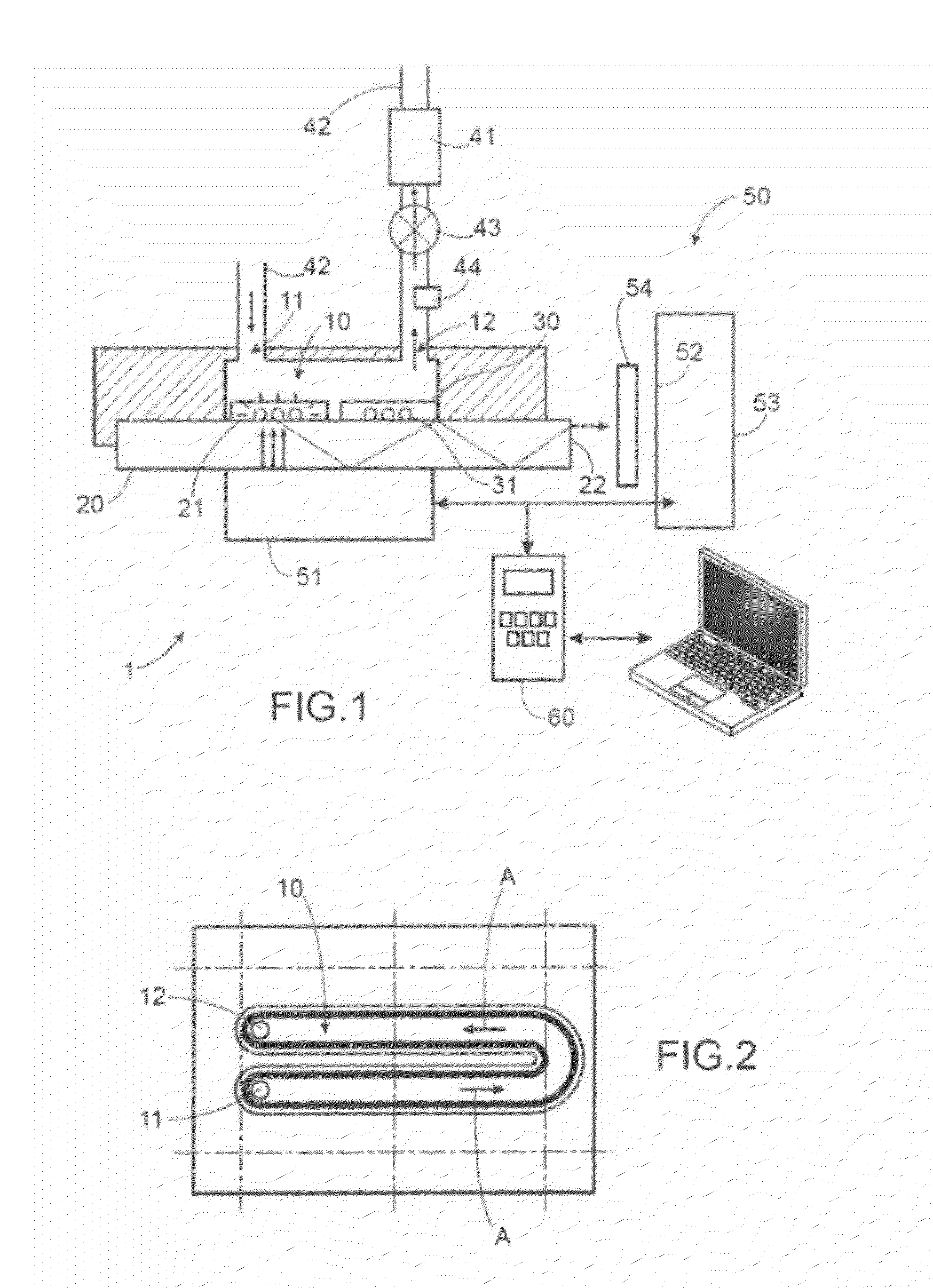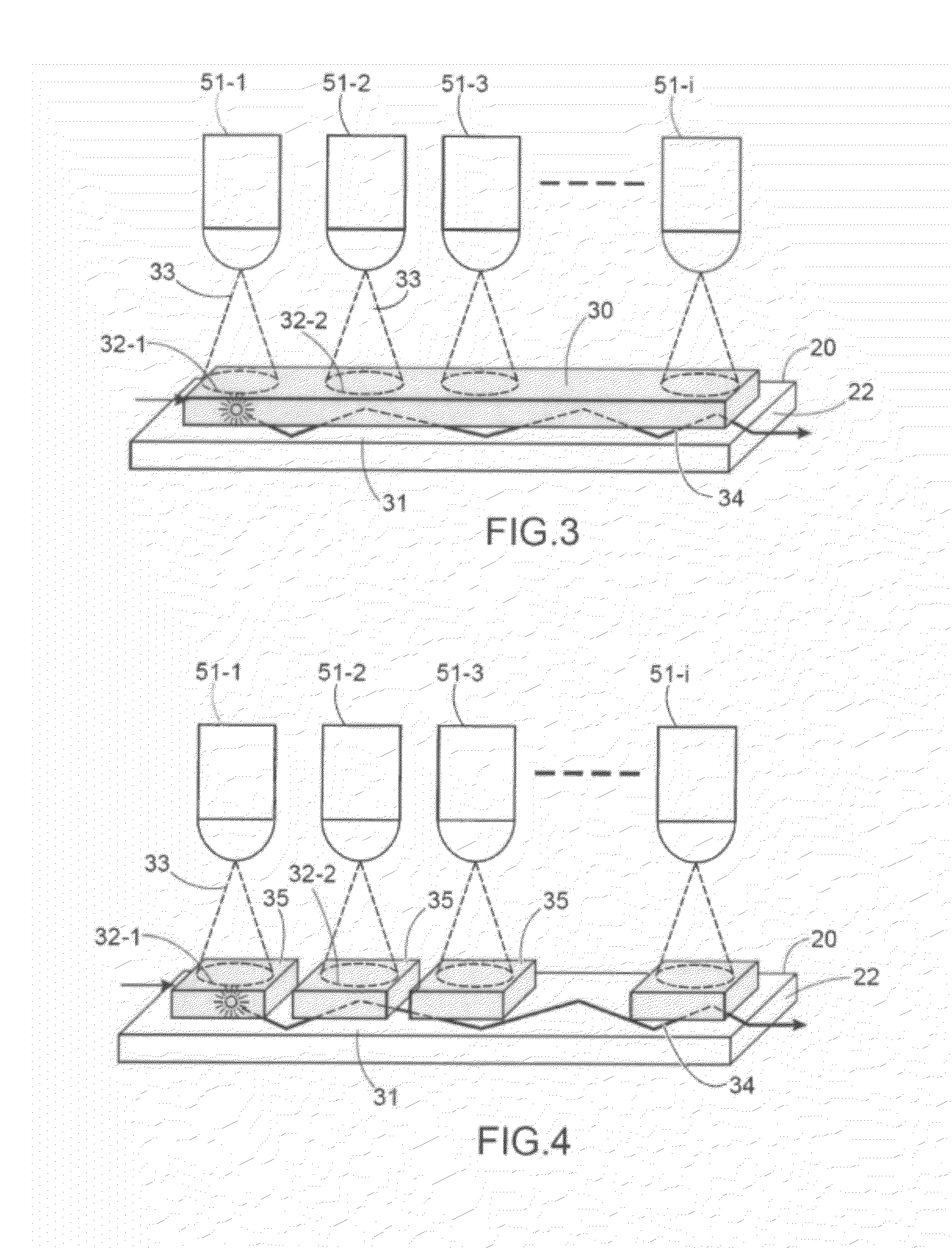System and method for detecting analytes present in a gas sample
a gas sample and detection system technology, applied in the direction of material analysis, instrumentation, spectral investigation, etc., can solve the problems of spatial heterogeneity, detection device, and inability to define the general shape of the material, and achieve the effect of increasing the viscosity of the sol
- Summary
- Abstract
- Description
- Claims
- Application Information
AI Technical Summary
Benefits of technology
Problems solved by technology
Method used
Image
Examples
Embodiment Construction
[0096]In FIG. 1 a system 1 is illustrated for detecting analytes of interest present in a gas sample according to a preferred embodiment of the invention.
[0097]The detector 1 comprises a fluidic chamber 10 provided with a gas inlet orifice 11 and a gas outlet orifice 12. Both of these orifices 11, 12 are positioned so as to define inside the fluidic chamber and cooperating with the interior walls of the latter, a fluidic flow path for the gas sample.
[0098]As shown in FIG. 2, the fluidic chamber 10 may extend in a rectilinear way and include a curved portion. The direction of the fluidic path is given by the arrow A.
[0099]The fluidic chamber 10 comprises a planar solid substrate 20, a surface 21 of which forms at least partly one of the interior walls of the fluidic chamber 10 (FIG. 1). The substrate 20 may be a microscope glass slide.
[0100]The substrate 20 is here transparent or translucent, and thus lets through light.
[0101]On said surface 21 of the substrate 20 is positioned a lay...
PUM
 Login to View More
Login to View More Abstract
Description
Claims
Application Information
 Login to View More
Login to View More - R&D
- Intellectual Property
- Life Sciences
- Materials
- Tech Scout
- Unparalleled Data Quality
- Higher Quality Content
- 60% Fewer Hallucinations
Browse by: Latest US Patents, China's latest patents, Technical Efficacy Thesaurus, Application Domain, Technology Topic, Popular Technical Reports.
© 2025 PatSnap. All rights reserved.Legal|Privacy policy|Modern Slavery Act Transparency Statement|Sitemap|About US| Contact US: help@patsnap.com



